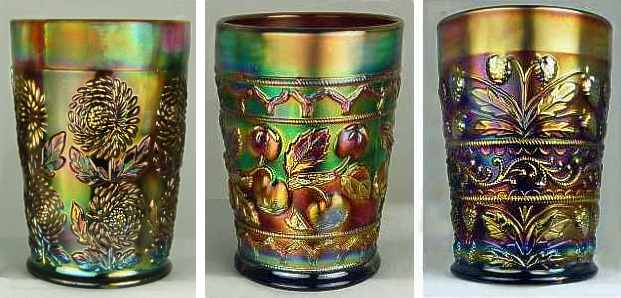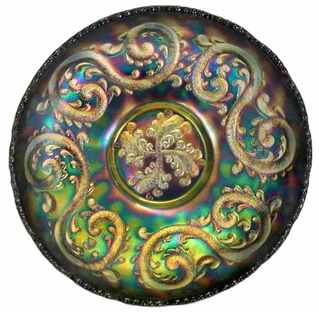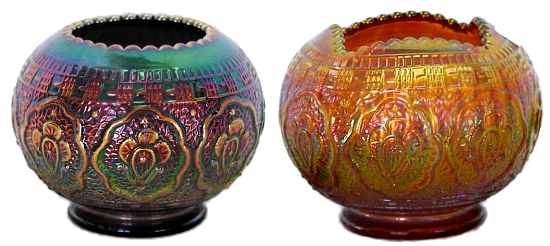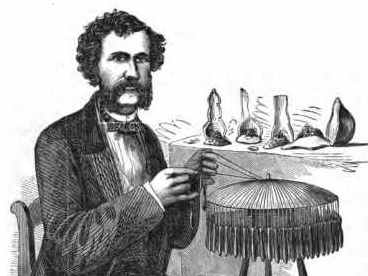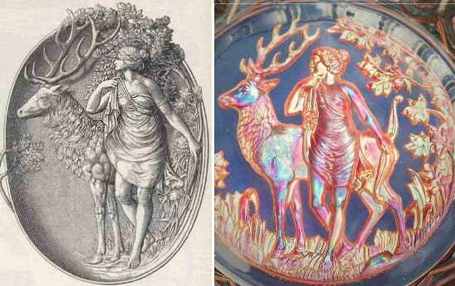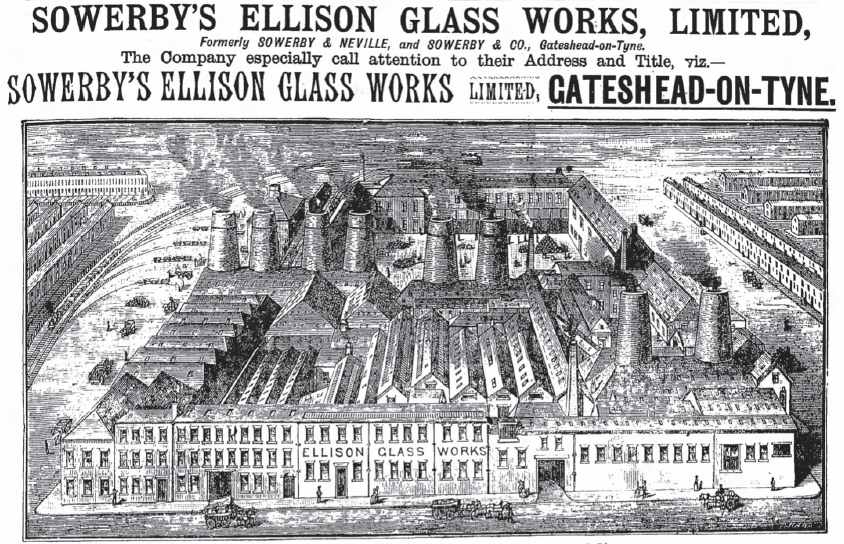NetworK ezine Issue 14. July 2016
by Glen and Stephen Thistlewood
Totally Devoted to Carnival Glass
We’ve been inundated with new readers over the past few weeks, so we’d like to begin with a very warm welcome to everyone. We’ve also had a lot of great feedback on the Pioneer Special #2 as well as the June issue – thanks to all of those who have written to us. Don’t forget you can read all the back issues on our website, the link is at the foot of this NetworK.
This issue is a real Bumper issue. So, grab a coffee, a glass of Dr. Pepper or maybe a nice cup of tea, and enjoy your NetworK #14.
Fabulous Fenton
|
Chip, John and Turk? Hands up anyone who knows who these three brothers were. If we tell you their names were Charles, John and Frank, then you’d surely guess we are talking about the Fenton brothers. We found the fascinating newspaper article in the 1908 Indiana Gazette, which had the headline “Former Indiana Boys Have Fine Factory” – adding “The Fenton Brothers Are at the Head of Thriving Glass Plant” (shown, right). |
The article noted that “the business is conducted by three brothers John, Charles (Chip) and Frank (Turk) Fenton” and it went on to explain that “the factory is built of concrete blocks and in this respect it enjoys the unique distinction of being the only glass plant in the United States so constructed.”
The Fenton brothers (originally from Indiana, Pennsylvania) established their factory in Williamstown, West Virginia, with the first glass being poured there in January 1907, and later that same year, the first iridised glass was made.
The Fenton brothers (originally from Indiana, Pennsylvania) established their factory in Williamstown, West Virginia, with the first glass being poured there in January 1907, and later that same year, the first iridised glass was made.
|
In September 1908, Fenton's first known ad for what we know today as Carnival Glass was published in Butler Brothers.
Take a Fenton Factory Tour Many of today’s Carnival collectors, lucky enough to have visited the Fenton factory, will have taken a tour of the factory and watched the glass being made (as well as coming away with armfuls of glass from the shop). |
|
But did you know that the first Fenton factory visits actually took place 108 years ago? This newspaper clipping from May, 1908 (above) shows that morning trips through the Fenton Art Glass Works were being offered, after a “trolley ride” to Marietta. It’s fascinating to imagine what a trip through the Fenton factory would have been like in 1908. Carnival Glass had just gone on the market and was soon being advertised in Butler Brothers wholesale catalogues. A year later and even more Carnival was on offer: patterns such as Feathered Serpent (shown right, courtesy of Seeck Auctions) and Stippled Rays were being shown. Imagine how exciting this exotic glass with its shimmering iridescence must have looked to people back then. Most likely the factory visitors would have seen similar iridescent "art glass" in expensive shops: glass made by Tiffany or Steuben, and with prices that would have made their eyes water. But the iridised glass seen at Fenton was different - it was glass they could afford. Read the full Story Behind The Glass, including fascinating insights from contemporary journals and catalogues in this feature: “Fenton in The Press”. |
The Curious Case of the Persian Medallion Hair Receiver
Fabulous Fenton in another form, this is a Carnival conundrum worthy of Agatha Christie herself. The shape that Carnival collectors call the Persian Medallion hair receiver has a curved-in top (like a rose bowl) but with a characteristic square opening on top.
But ... was it originally intended to be a "hair receiver"?
Fabulous Fenton in another form, this is a Carnival conundrum worthy of Agatha Christie herself. The shape that Carnival collectors call the Persian Medallion hair receiver has a curved-in top (like a rose bowl) but with a characteristic square opening on top.
But ... was it originally intended to be a "hair receiver"?
Our "hair receiver" story begins in a “Downton Abbey” stately home in England (called Hinton Ampner), before moving across to the USA, to Mark Campbell, the rather splendid gentleman pictured above, right. He winds it this way and that, with some amazing results.
We also look at rats (really) and more in exploring the answer to the conundrum. As you would expect, it’s all linked to hair receivers.
Don’t miss this mystification, this twisting, teasing “hairy” tale: click on the Mark Campbell picture, or click here.
|
Oh, please … Diana! It’s fascinating to unravel the origins and inspirations behind Carnival Glass patterns, but this one was truly an unexpected delight. Whilst skimming through a 1923 WMF* catalogue we spotted this metalware visiting / calling card holder featuring Diana the Huntress. It’s almost identical to the Carnival pattern of that name, which we have attributed to Zabkowice of Poland. Which came first? We feel it’s most likely that the WMF piece was first, and Zabkowice copied the design. Amazing, isn’t it? * WMF is Wurttembergische Metallwarenfabrik, a famous household metalware producer, founded in 1853 and based in Germany. Click on the image to read more about Diana The Huntress, part of our major feature on the amazing Golden Patterns. |
|
The Glassworkers Procession of 1823
An incredible vision of the past was presented in a British Pottery Gazette journal in which an account of a glass workers fete in Newcastle (England) was described. It reads: “On Sept.12, 1823, the inhabitants of Newcastle and Gateshead were gratified with a spectacle which in that part was novel and peculiarly interesting, although in London it is common. It was a procession through the principal streets of the workmen employed in several of the glass-houses, each bearing in his hand a specimen of the art …. amid the cheers of the multitude, the firing of cannon and the ringing of bells, and preceded by the band of the Tyne Hussars … A salute was fired several times from a fort mounted with glass cannon to the astonishment of the spectators; a glass bugle which sounded the halts and played several marches, was much admired for its sweetness and correctness of tone … Many of the men wore glass hats and carried glass swords.” Sowerby in its “Glory Days” in the late 1800s One of the early glass houses in Tyneside (England) at that time was Sowerby, who later went on to make splendid Carnival Glass. In its glory days, |
Sowerby was one of the greatest glass makers in the UK, exporting all over the world, and the picture (above) from the late 1800s shows the huge scale of the glass factory's operations.
Sadly the later days of glassmaking at Sowerby were not quite as fine, as adverse economic conditions caused the once proud factory to suffer a decline (a fate suffered by many glassworks everywhere). Len Galloway, a Carnival collector from Tyneside, wrote to tell us of his memories from the early 1960s when his school class was invited to the local glassworks (almost certainly it was Sowerby) as prospective “school-leaving” employees. Len recalls that “on our entrance we were told there were vacancies - but after touring around the most filthy, dusty place with puddles of dirty water etc., none of us asked for job application forms! And when one thinks of the other careers - i.e. in coal mines/shipyards, heavy engineering etc., - it says a lot.”
Sadly the later days of glassmaking at Sowerby were not quite as fine, as adverse economic conditions caused the once proud factory to suffer a decline (a fate suffered by many glassworks everywhere). Len Galloway, a Carnival collector from Tyneside, wrote to tell us of his memories from the early 1960s when his school class was invited to the local glassworks (almost certainly it was Sowerby) as prospective “school-leaving” employees. Len recalls that “on our entrance we were told there were vacancies - but after touring around the most filthy, dusty place with puddles of dirty water etc., none of us asked for job application forms! And when one thinks of the other careers - i.e. in coal mines/shipyards, heavy engineering etc., - it says a lot.”
Feedback
We have an update on the Tartan epergne offered in Australia by "The King of China" (featured in the June NetworK #13). Carl Chapman tells us that his fabulous marigold Tartan epergne was sourced in Australia, thus establishing further proof that Carnival examples were originally imported there from Brockwitz in Germany.
Len Galloway told us of an amusing incident that echoed Phil Garrison’s recollections as written in our NetworK Special - Pioneers #2 (“Insulted by Experts”). Len wrote: “snobbery still exists today in London antique markets and shops, as I was almost escorted from one for having the audacity to ask if they had any Carnival Glass for sale”. Len added that in the same antique shop, they told him “with great glee that they had tea chests full of Carnival back in the 1960s, which ended up in a refuse wagon!” It makes you wonder what treasures might have been in those tea chests that were dumped.
Many thanks to Carl and to Len for the information.

